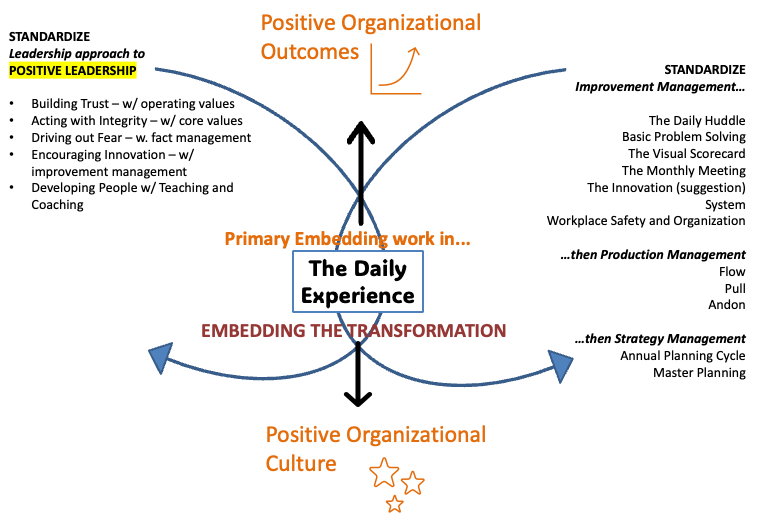I just had a short discussion with someone about the difference between management and leadership. While the two concepts are similar and have common aims, more contemporary thinkers tend to discern between the two. Algahtani (2014) argued, “Managers exercise their control through formal power, but leaders use their vision, and by inspiration, motivation to align their followers.” Notably, author Simon Sinek suggests that you can only manage schedules, tasks, and results, but to get to a shared goal, we need to lead, noting, “No one wakes up in the morning and wants to be managed…people wake up in the morning and want to be led.” (Sinek, 2024).
My go-to definition of leadership comes from my research into strategic leadership, specifically Peter Northouse, who argues that leadership is an influencing process that moves a group to attain a shared goal (Northouse, 2019).
If managers work on getting things done, leaders ensure a team is doing the right things. The right things are based on the leader’s business awareness—this kind of leadership supports good performance. However, outstanding performance usually springs from a leader guiding the team ethically, morally, and virtuously.
Positive leadership
The idea of virtues and values as navigational aids for leaders isn’t new. In fact, a more recent field of study, Positive Leadership, summarizes a set of leadership approaches that have been around for millennia, including servant leadership, ethical leadership, authentic leadership, and, more recently, transformational leadership (Blanch et al., 2016). Positive leaders help team members play to their strengths, find meaning in their work, and perform at the highest levels (Beattie, 2019).
Sounds like a good way to lead if we are looking for high-performance
Yep. It is.
But, back to management…and leadership (together)
Management is important. So is leadership. While positive leadership is a driver of high performance (Beattie, 2019), high performance also requires getting things done well: executing. If you’re in the operational excellence business, including the hot pursuit of an operational excellence transformation, you need both at once. This is serious stuff: I coach executives to search for only excellent managers who exhibit exceptional leadership (influencing processes).
Both. And.
So, then, you have to do both at the same time. How do your (current) management processes bring them together?
We’ve seen a handful of organizations that have created (with our help of course!) a natural and harmonious blend of management processes and active positive leadership . We start with creating the structure that makes the opportunity a reality in every team’s daily experience: the daily meeting or daily huddle. Using a script with powerful open-ended questions about problems that have offended process target conditions (did we miss any planned discharge times yesterday?) or the team’s core values (did we harm an patients or team members yesterday?), managers have a moment—five to 15 minutes every day—to influence the team, positively. They can take the “crickets” (the ones you hear chirping when you first start these huddles because we all experience fear when talking about problems), and shift the team’s mindset, by navigating to virtues and values and the meaning behind (the “why”) we need to talk about problems.
These structures are standardized management processes shared throughout an organization. Without standardization, you won’t get positive outcomes.
Without positive leadership, the outcomes you may get won’t stick, unless you transform the organizational culture to a positive one. The only way to do that is to use Positive Leaderhip as the standard approach as you operate the standardized management processes.. Moving from the esoteric to the practical, we need a model.
A Model for Practice
As you can see in Figure 1 below, I’ve articulated both the management processes and positive leadership. The latter is inspired by Bass and Avolio (1996) who simplified their construct for transformational leadership—one of the approaches to positive leadership—in their seminal assessment tool, the Multifactor Leadership Questionnaire.
My favorite tweak to the Positive Leadership approach—beyond adding some “how to” phrases—was changing Bass and Avolio’s “encourages others” to “driving out fear.” In my experience, what the management processes (together the Management System or Daily Management System) demands is honest and open communication. Frankly, fear quashes that (for more on this, read anything by Amy Edmondson, especially her Psychological Safety). The other tweak I hope is helpful changes “coaches and develops people” to “developing people with teaching and coaching.” For my earlier rant on this, read here.
…I’ve dropped a lot here today. I recommend you please let it sink in.
I’ll be doing an ASQ Webinar in late April where I’ll be working this out in more detail and in more practical terms. I’ll post the deets here soon. Until then, be positive to stay excellent.
References
Algahtani, A. (2014). Are leadership and management different? A review. Journal of management policies and practices, 2(3), 71-82.
Bass, B. M., & Avolio, B. J. (1996). Multifactor leadership questionnaire. Western Journal of Nursing Research.
Beattie, E. N. P. (2019). "The power of positive leadership: An examination of leadership strategies based on positive psychology, applied neuroscience, and the learning sciences." COABE Journal 8(2): 52-63.
Blanch, J., et al. (2016). "Positive leadership models: Theoretical framework and research." Papeles del Psicólogo 37(3): 170-176.
Northouse, P. G. (2019). Leadership: theory and practice. Los Angeles, CA, SAGE Publications.
Sinek, Simon (2024) Management vs. Leadership: What’s the Real Difference? [video]. YouTube. https:youtube.com/watch?v=p4uNIirSPaE






